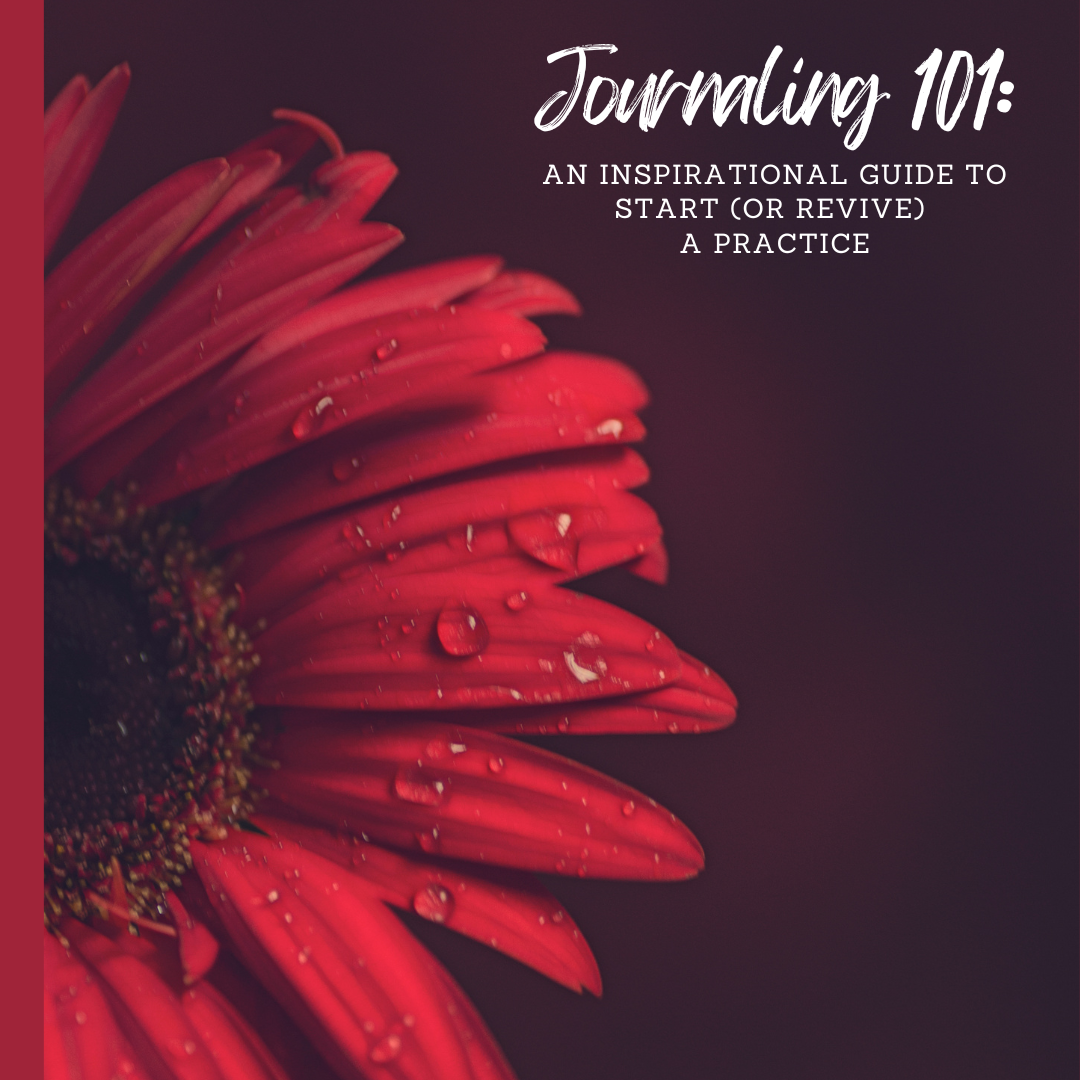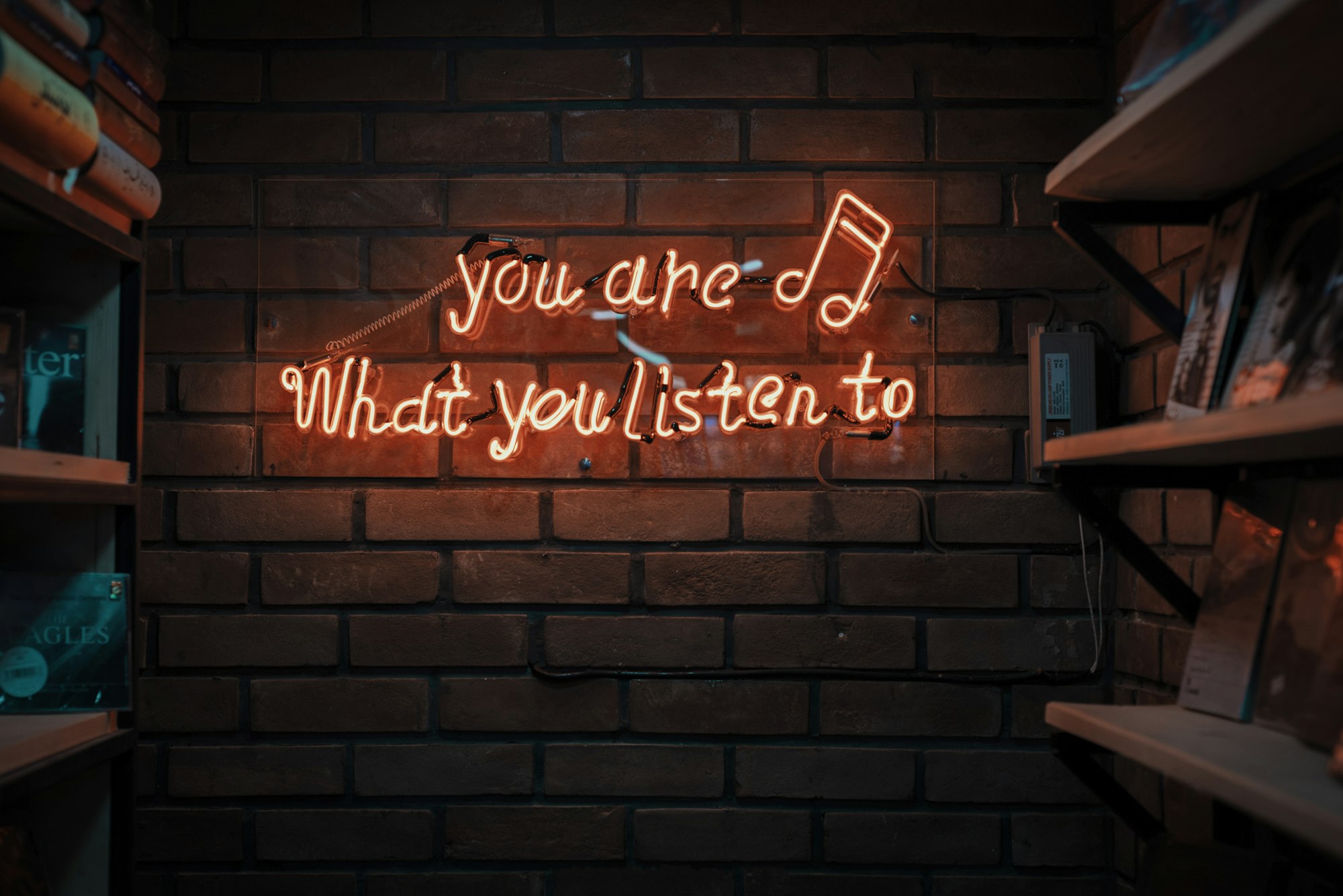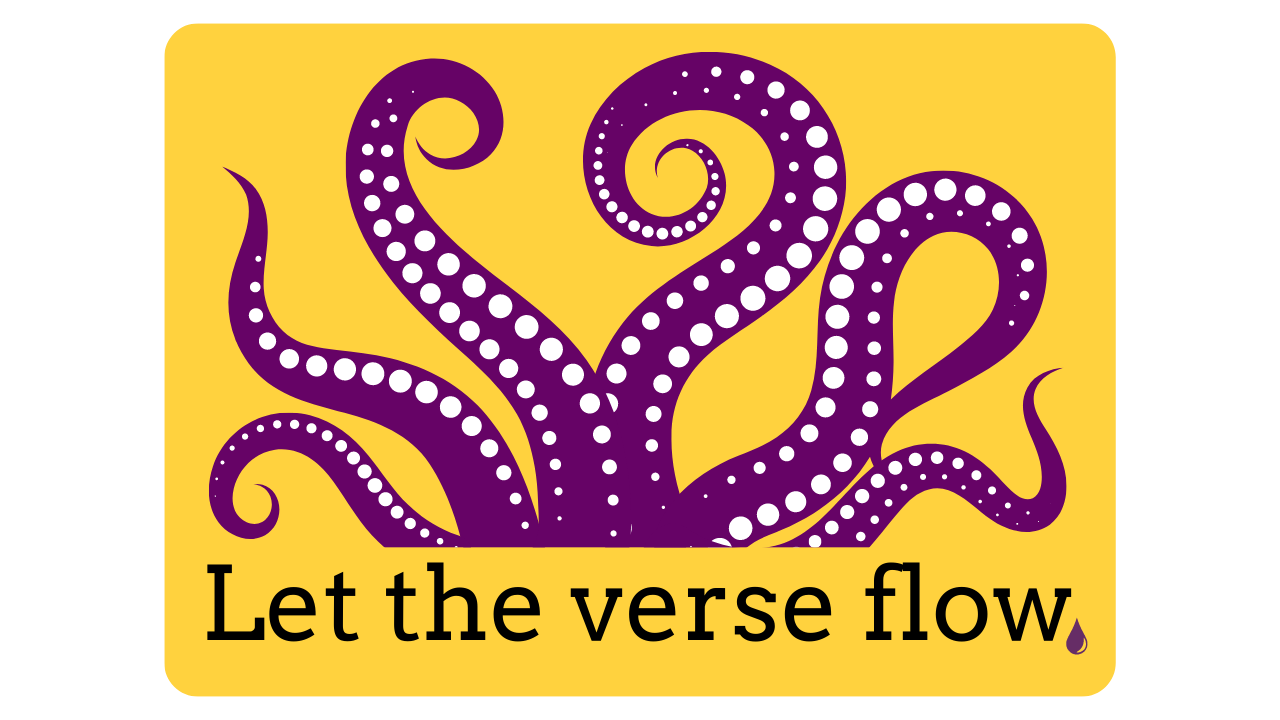Listen to Let the Verse Flow on Your Podcast Player of Choice
This is a transcript from episode #7 of the Let the Verse Flow Podcast.
Today we are going to connect the threads between how making space and time for friends (and actively tuning into those interactions) helps us build more meaning in our lives. We'll have to clear the cobwebs—get rid of the dead weight and make sure we can distinguish between people who we should journey onward with as friends and those that we can leave behind. To make that distinction, we'll need to actively listen to others and read the signs accordingly. Once we’ve found them, we must be mindful of our times together because that’s where the meaning lies.
If you’ve listened to my earlier podcast episodes, you know that my mom was my first best friend. Always was, and always will be. I am lucky enough to have a few other rock-solid friends. One of them I met when I was in my early 20s. She was an administrative assistant, and the person to greet everyone on a particular floor and department of the large nonprofit where I worked as a researcher. I used to crunch numbers if you can believe it. I love learning new things, whether from ideas or numbers, and I did that for a while in my early career.
The moment I met her, I saw two things. A huge, welcoming smile (what everyone needs on their first, scary day at a new job) and her piercing blue eyes (set against jet-black wavy hair). Her eyes were the stuff of legends. Breathtaking—like the blue in those postcards you see of Ios in the Aegean Sea. Her eyes had a story all their own, and she wanted to be my friend. It was apparent that I was her kind of person, somehow it had been ordained as so, and she invited me to have lunch with her that day.

Over the next twenty years, we’d tell each other our deepest, darkest secrets. Some of them were rather dark. Tales of alcoholic family members, abuse, sobriety, compulsions. Like most people, we both had past lives that when viewed in the cold light of day had awful and scary moments. But we understood each other, we spoke each other’s language, and we loved each other’s strength. Feeling seen (and loved) for who you really are is the greatest gift you can get. On the flip side, seeing and loving someone else for who they really are is the greatest gift you can give.
It wasn’t that she and I were so similar—we had different tastes in music, books, and fashion, but we agreed to disagree on those topics because we were on the exact same wavelength when it came to fundamental ideas and philosophies. Things like how you treat people, what motivates you to work hard, and how ocean views and Twizzlers make the world a better place. We weren’t looking for carbon copies of ourselves, or even to be told that we were always right. What we really wanted from each other was a recognition that we mattered. That we were funny, honest, loving, and authentic.
I was reading an interesting article recently on the myths related to finding good friends. Myth one is that you instantly recognize a potential good friend. Especially in recent years, we may be more hesitant to instantly connect, but in the case of the friend I’m mentioning here, there was some unspoken vibe in the air that let me know instantly that she was for me. I think it can happen both ways—you know instantly, or you don’t and you figure it out later. The important thing is that you figure it out and get to the juicy stuff—the friendship that means everything.
We would remain best friends through relationships, illness, and finally her passing at too young an age from ovarian cancer. Aside from the millions of wonderful times I shared with her, many of them along the shore of a beach, in the presence of seagulls and a huge bag of Twizzlers, I internalized our stories, and those memories so thoroughly that when she died, I had already transplanted part of her in my heart. That means that not all of her died. The part of her that she shared, completely and with an open heart, lives on in my heart. When I breathe in and out, I breathe through her and she becomes part of my very life essence. She lives on. Not in the same comforting way I used to rely on before, but through the strength of her elusive but permanent spirit.
Once you have these types of friendships, you can recognize when you aren’t in one. You know when you have found someone who really belongs with you, and someone who doesn’t. Today we are going to talk about how to understand the part of your purpose that is bound together by your friendships. Also, how the people around you, the people you surround yourself with, become part of the way you manifest your purpose. Sometimes we can get confused about who those people should be.

Sign up for the Let the Verse Flow Newsletter and get access to all my articles, including this free journaling guide.
As I’ve said before, most of my poetry starts out kind of dark and then turns hopeful. It’s like I’m actively processing the pain or struggle and unconsciously willing myself to see a brighter side. It’s not that I want everything to turn all rosy, it’s that I can’t live forever with all the thorns. Part of me has to break free to find the good. That’s who I am, and luckily I manage to do it every time.
This poem is about passing up the people who don’t get your meaning so you have time, energy, and a mindset to get to those gems who do. When you find them, hold on tight, be present in your interactions with them, and enjoy being completely understood for who you really are. It’s a gift that someone gives you, and you’ll know it when you find it. They may not have brilliant blue eyes like my lovely friend did, but there will be other guideposts to tell you that you have found someone who matters in your life. Together, you will make meaning. Together you will add to your life’s purpose. Before you can find those people, you may have to wade through the usual suspects, but truth be told many of them may be quite unusual.
My Meaning (and You Don’t Get It)
by Jill Hodge
Unseen, unheard, invisible cloak
I didn’t know I wore one. It binds and it hurts.
You misheard me, or was it me who misspoke.
Complications heading our way, I veer and I choke.
Weighed down by your prodding and your incessant poke.
I don’t laugh easily and I don’t feel certain
You don’t hear me, no vision for what’s behind my curtain.
Can’t talk over you, can’t bridge our gap
Can’t find a common language, yappity, yap, yap.
Back and forth and nonsense still
Words in the air, where no meaning lives.
Soulless outtakes and petty adlibs
Story stops in fits, shortstops and false starts.
All that glistens can make you blind
But still the other side of the room beckons,
You slither, you slide.
I’m hurt, confused, alarm goes off.
Till I realize that all this fo show, we party and petty
We laugh, we witty, we fetty.
My meaning is understood by those who know where they dwell,
They turn up my truth, they listen and our thoughts, they tell.
Not everyone gets you, this moment’s shown well,
Not everyone’s right there.
Shine on for the ones who see you, their plus-one, their pair.
Message received, realness declared,
smelling in deep
the perfume of your lavender air.
I used to think everyone had to like me. I don’t know where I got that idea. It was a young idea, something I pulled out of thin air when I was really young. Have you noticed that we can keep ideas we made when we were like 5 or 7 or 8 years old forever? We hold on tight to them like they are binding laws. Like our life depended on them being right when we should have changed our minds when we were 12 and self-corrected.
But I turned it into a way of seeing, a way of going through life, and then it became a hard fast rule. So much so, that if someone didn’t like me, I didn’t know how to handle it. Did I do something wrong? Did I not realize something I should have done? Notice the questions were all about me. I’d go off on this self-centered rampage, asking myself what I could have done wrong, should have done better, or could do now to fix things.
What I’m learning now, is that some people (and their ideas) aren’t for you. They don’t mesh with your thinking or your perspective. Sometimes the bridge is too wide, too far to traverse. Your ideas and theirs are too far apart. In those situations, instead of wondering what you did wrong, how about if you ask yourself if you can live with a situation where you don’t agree with someone else and move on? Perhaps they don’t understand your meaning and you don’t understand theirs. The world isn’t ending. There are people who do understand you. Find them, spend time with them, and have long conversations with them.
The flip side of feeling misunderstood is feeling completely understood (and heard) by your friends and family. Instead of thinking so much about how someone has done you wrong, doesn’t understand your position, or isn’t interested enough in you, spend some time bathing in the grace of knowing the friends and family members who do get you. Take some time to reflect on those moments when someone does confirm your position (or at least respectfully agrees to disagree with it) and who finds you wildly interesting. They are out there. Some of them may be listening to this show, they may be at your job, in your gym, or the local coffee house.
I used to spend way too much time thinking about how I could recruit people to come over to my side—like me, think like me, understand me, listen to me. And then I discovered that I was wasting more time on those people and situations and letting my life with my friends and family sort of pass me by. I wasn’t attending to all the meaningful interactions I was having with people that really mattered to me. I didn’t figure this out until recently. I’m in my 50s, I want better for you. I want you to figure it out in your 20s. I hope some 20-year-olds are listening to my podcast because it could save them a lot of time and grief to learn how to identify who is for you and who isn’t. Not only that, but just as importantly how to be completely present with those friends and family who get you so you can make as much meaning together as possible on your life journey. Meaning is found in these types of relationships, and I don’t want you to let them pass you by.
A key component of the meaning we make with friends lies in experiencing life together by being fully present and mindful. Mindfulness that you cultivate in solitude at first and then allow it to spread and seep into your relationships. Being mindful and present when you are spending time with good friends will give you snapshots, memories, and emotional imagery to carry with you throughout your life. It’s like how I can see myself and my friend on the beach so vividly. I was present with her and mindful that our time was special. Way before she got sick, I knew that our time together was precious.

But it can be hard to approach mindfulness. Yes, I want to be more mindful, especially of the good experiences and people in my life. Yes, I want to be more present in the moment, especially in good times with good people. But mindfulness is a huge concept, and I don’t really want to get a Ph.D. in mindfulness. Because mindfulness can seem like this huge iceberg of an idea that's too daunting to try to chip away at, we'll bite off a small piece to get started. Perhaps some touchstones will help us to start.
Before I try to tackle a chunk of insight into mindfulness, I think we need a bit of Joni Mitchell here to set the stage for our perspective. Joni Mitchell makes everything better. To widen our perspective—and keep it wide when we ponder these big, beautiful ideas, let’s recall Joni’s song Both Sides Now.
The song starts with angelic views perhaps from childhood, “rows and floes of angel hair and ice cream castles in the air and feather canyons everywhere I’ve looked at clouds that way.” And then, the clouds lose their mystic, joyful patterns and she sings, “so many things I would have done but clouds got in my way.” Things have turned from angelic visions to troubled ones, and finally Joni reconciles the two “I’ve looked at clouds from both sides now… and still somehow it’s cloud illusions I recall I really don’t know clouds at all.” That’s the line that gets me. After growing and living with the clouds, you get older and wonder if it was really clouds that stopped you or your perception and beliefs that you projected onto clouds. You have to listen to her voice when she sings this, but the lyrics are beautifully brilliant and resonate deeply with my experiences with clouds. On Both Sides Now she takes us on a journey from angelic, dreamy childish thoughts to the reality of how we get in our own way on this ride we call life.
Ultimately I think she’s reminding us that even when we think we are looking at things from both ways (from all sides) we are looking at the illusion of those sides that we have manifested as real. There are two sides, maybe more to situations, and even when we think we have gained the right perspective, it still may be only our side of the story. Our way of seeing things. While this song always makes me feel just a bit sad, there’s a wonderful sense that life’s a journey where we get to try to see from both sides. We try to get past the illusions. There’s hope in that quest. Check out Joni Mitchell’s Both Sides Now on the Season One Music Playlist on my YouTube channel (or on my website). Listening to the playlist could set the stage for your journaling on mindfulness (and of course, we are going to get to journaling later).
As we think about mindfulness, we can start with the idea of listening. How do we turn up our listening skills? That’s the important first step of mindfulness that we will bite off. Here are some ways that I’m trying to actively listen on my way to more mindfulness. Perhaps they will work for you too:

Active Listening Toward Mindfulness
Are you guilty of listening with one ear, and letting your mind drift off when someone is talking to you so that you can think about what you want to say next? I am. Sometimes I think I’m having one big conversation with myself, while I’m waiting for my turn to insert my opinion into a conversation, and I haven’t really heard much of what the other person has said. I think a lot of us do this. We aren’t listening to the other person because we are too busy waiting for our turn, our road into the conversation. But it occurred to me that if you’re basically listening for your entry point into the conversation (to make your thoughts known) and not really taking in what the other person is saying, then aren’t you really just having a conversation with yourself? The best conversations are with people who pause and ask questions, build on top of what the prior person said in interesting ways, and leave some room and quiet time to consider what’s been said. Talking on top of each other is more about competition and convincing yourself that you are right. It’s not a way to communicate effectively.
Why the focus on listening for friendships and meaning? Because the meaning (and the memories) are deeper with people when we are fully engaged in our interaction. To be fully engaged, you must be present and listening. Active listening sets the stage for setting up a mental representation of the conversation (and a deeper memory of its significance).
- The first step is to stop for a bit and take an inventory of your conversations. Ask yourself: are you listening? Are the people you are talking to listening to you too? Is this an exchange or is it like double Dutch where you are always looking for a good entry into the ropes? When I was younger we played double Dutch in the schoolyard. I was usually the turner, but once I got better at jumping, I remember a light bulb going off when I realized that the most important first step to double Dutch was getting into the ropes. You had to time it perfectly and then step in a pattern. Double Dutch is all about making a clean entry into the ropes. But if you treat your conversation like double Dutch, and always look for your entry to speaking, then you aren’t paying attention to your conversational partner. You are looking for your way in. And if both of you are talking and trying to get a turn at double Dutch (find your entry point in this double Dutch game) then this might not be a great friendship match. People aren’t likely to hear you—even when you do have amazing ideas—if they are too charged and fast in firing away their thoughts to take in what you have to say.
- While you’re taking inventory, ask yourself, is this conversational partner someone I want to converse with? If I’m not being heard, enjoying the conversation, or moving ideas forward, can I walk away and spend my time on something more useful? There are music playlists to listen to, podcast episodes, journaling to do, walks in nature, and phone calls to make to loved ones. Perhaps spend some time on those activities instead.
- The last question is: If I can actively listen in this situation, what do I stand to gain? Understanding, knowledge, entertainment. And is that what I want from that person?
For now, just start taking inventory of your conversations and make some broad-stroke assessments of whether these conversational partners are worth your time and effort. If you stop being a major player in these types of conversations, how will it make you feel? Do you think you’ll feel better or worse, and why?
Perhaps you feel like Drake in that song No New Friends or his other song No Friends in the Industry. He’s always writing about how he doesn’t need any new friends—just his old crew, his ride-or-die friends. This is really an issue of trust, not trusting the people he’s meeting now that he’s so famous. But if that rings true for you, and you’re all good with the friends you have, then focus on making meaning through active listening and mindfulness during your times together.
Natural Settings to Coax Mindfulness
In addition to practicing active listening in your conversations, and taking an inventory of the merits of those conversations, you can take some wonderful steps toward mindfulness by spending time in nature. Natural settings are a great place to practice mindfulness because our breathing and walking start to jive with the sensory experiences around us (and we slow down). Once your breathing and walking settle down, start listening to the nature around you. Listen for birds, trees moving in the breeze, water flowing nearby, the sound of twigs breaking underfoot. Here are some possible scenarios.
- A walk in the park. I walk to and from work through NYC’s Central Park. I’ve seen wild mushrooms, owls, raccoons, rats (of course!), and other assorted wildlife. It’s fascinating to remember that all these creatures share our planet.
- Sitting on a balcony or outside on a bench and taking some slow, deep breaths. I like to rock in my rocking chair on my balcony. Iced coffee in hand if I’m lucky, rocking away while breathing slowly.
- Hiking in the woods. You're lucky if you can get this. Surround yourself with the green canopy of mature trees and let nature take you up to heaven on earth.
- A day at the beach watching the waves go in and out (breathing slows, thoughts calm down). That's mindfulness.
Remember that the point of these mindful moments is to begin to figure out what ideas, themes, and ways your mind finds pleasure when it is soaking in the present moment without distraction.

Sign up for the Let the Verse Flow Newsletter and get access to all my articles, including this free journaling guide.
Journaling to Uncover Meaning
Your meaning—what you stand for and how you want to be seen and heard—can be best appreciated by those who truly want to know you, those who have the sensibility to understand you, and those who will make the time. Once you find that you have good friends and family surrounding you, make sure you listen to them and take time to engage in your interactions fully. Use your developing mindfulness to be present in those fulfilling moments so that you can carry them with you for years to come. You are making meaning through these interactions with people who reinforce your very essence. That’s why we're here, isn’t it?
As a friend, you know I’m going to encourage you to journal this week. I want you to remember that this journal is private, so you don’t need to stress over grammar, complete sentence structure, or how ludicrous you think your ideas sound. This journaling time is about getting in touch with yourself. No one else sees it and it’s a judgment-free zone. Please don’t tell me that you can’t journal because you aren’t that type of person. If you have thoughts and can write, you are the kind of person who can find insight through journaling. If writing is difficult, capturing an audio message is a fine alternative.
Here are this week’s journal prompts:
Until next time, remember what Joni Mitchell said and “look for both sides” as you reflect on the bright side of the beat. 🌞
Music: My thanks to all the musicians who make incredible music and have the courage to put it out into the world. All music for my podcast is sourced and licensed for use via Soundstripe.
Songs in this podcast episode:
Newhi by Dallas $tyles; Winning Streak by JeesGuy; Pieces by Nu Alkemi$t; Pyaar Kee Seemaen by Cast of Characters
LTVF Season One Music Playlist: Check out the songs that inspire me, and connect with artists from many genres who add to our collective, human soundtrack.
Tune in to Let the Verse Flow: Here's How
Listen to Let the Verse Flow, completely free, wherever you get your podcasts. Share it with friends and family—anyone who wants to get off the hamster wheel of life to find more joy, positivity, and happiness.
Listen to Let the Verse Flow on Your Podcast Player of Choice
Check out the resources on this website (and subscribe) to get podcast episodes, poems, articles, music playlists, and journal prompts delivered to your inbox.
Then, connect with me on Instagram. Let me know you hear me out there!
Let the Verse Flow is an independent publication launched in June 2023 by Jill Hodge. If you subscribe today, you'll get full access to the website as well as email newsletters about new content when it's available. Members are vital to building a rich community of diverse voices. Join us by subscribing today; consider a paid subscription to support the community if possible. Thank you!



